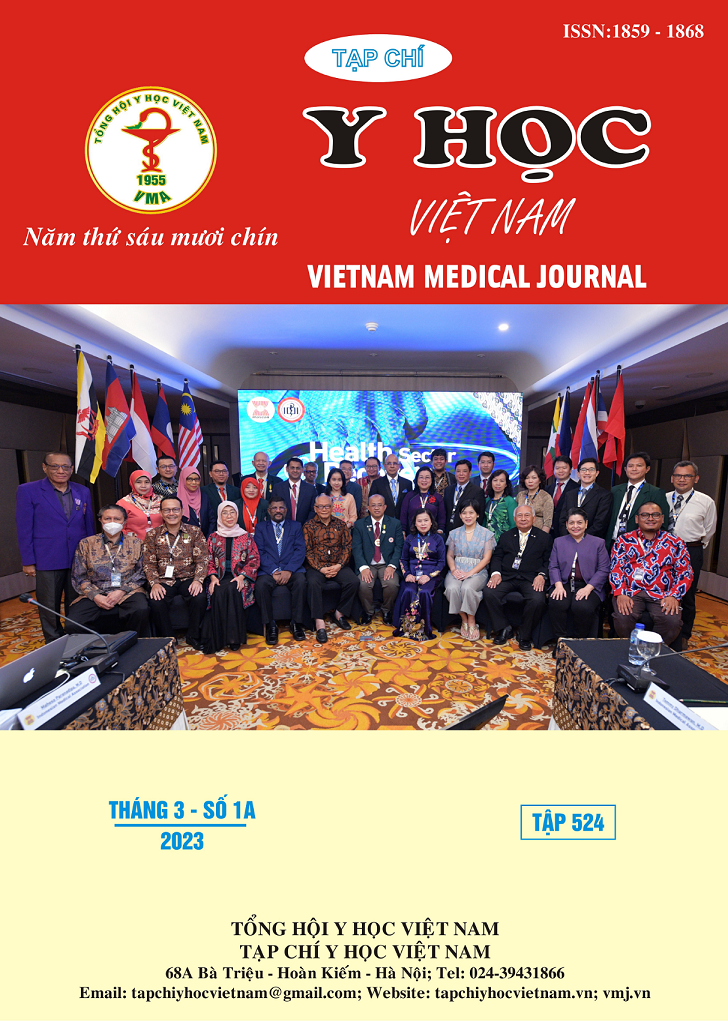RESULTS OF THIN-SCALP GRAFTS IN THE TREATMENT OF DEEP BURN INJURIES IN CHILDREN AT THE LE HUU TRAC NATIONAL BURNS HOSPITAL
Main Article Content
Abstract
Objectives: Evaluation of the results of thin-scalp grafts in the treatment of deep burn injuries in children. Subjects and methods: Prospective study, intervention 57 times thin-skin grafts surgery on 38 pediatric burns patients to treat deep burns of 2% of body surface area (BSA) or more at the National Burns Hospital from 10/2021 to 07/2022. Patients were divided into two groups of scalp (study group) and other area skin (control group), and were compared in terms of the characteristics, manifestation and outcome. Results: The survival rate of thin-skin grafts in the study group was significantly better than that of the control group (p = 0.02), especially in the post-necrotic resection background. Compared with the control group, the study group had time heal of skin donation area significantly lower (p=0.000). Evaluation of the scalp donation area after 1 month and 3 months of surgery found that 100% of patients had normal hair growth, there was no case of focal dermatitis. Post burn pruritus was higher in the control group than in the study group, the difference was statistically significant (p = 0.000). In the control group, there were 5 children (17.86%) after 3 months of surgery, there were keloid scars, hypertrophic scars in part of the skin donation area; while, the study group had no cases, the difference was statistically significant (p = 0.03). Conclusion: The group that received thin-scalp grafts had better survival ability. the scalp donation area healed faster and few complications that cause cosmetic loss and patient's quality of life.
Article Details
Keywords
scalp; thin-skin grafts, burns
References
2. Chang L.-Y., Yang J.-Y., Chuang S.-S.et al. (1998) Use of the scalp as a donor site for large burn wound coverage: review of 150 patients. World journal of surgery, 22 (3), 296-300.
3. Zakine G., Mimoun M., Pham J.et al. (2012) Reepithelialization from stem cells of hair follicles of dermal graft of the scalp in acute treatment of third-degree burns: first clinical and histologic study. Plastic and Reconstructive Surgery, 130 (1), 42e-50e.
4. Martinot V., Mitchell V., Fevrier P.et al. (1994) Comparative study of split thickness skin grafts taken from the scalp and thigh in children. Burns, 20 (2), 146-150.
5. Junior J. A. F., Freitas F. A., Ungarelli L. F.et al. (2010) Absence of pathological scarring in the donor site of the scalp in burns: an analysis of 295 cases. Burns, 36 (6), 883-890.
6. Mimoun M., Chaouat M., Picovski D.et al. (2006) The scalp is an advantageous donor site for thin-skin grafts: a report on 945 harvested samples. Plastic and Reconstructive Surgery, 118 (2), 369-373.
7. Bayat A., Arscott G., Ollier W.et al. (2004) Description of site-specific morphology of keloid phenotypes in an Afrocaribbean population. British journal of plastic surgery, 57 (2), 122-133.
8. Nieuwendijk S. M. P., de Korte I. J., Pursad M. M.et al. (2018) Post burn pruritus in pediatric burn patients. Burns, 44 (5), 1151-1158.


